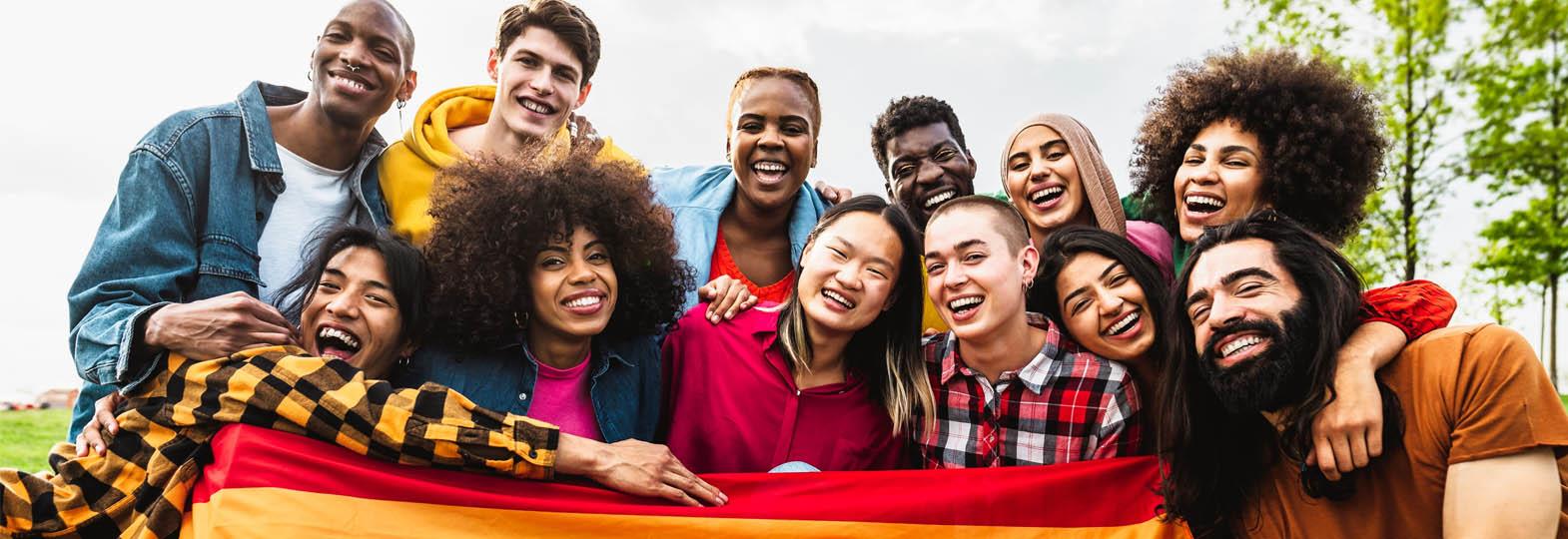Clothes and fashion have always been an integral part of our society. Apart from protection from climatic and natural conditions, they also form a basis of self-identity. Historically, there has been a distinct line between the two genders regarding clothes. However, things started changing over the last fifty years. The ever-changing characteristic of fashion made it easy to adapt to the LGBTQ (lesbian, gay, bisexual, transgender, queer and others) trends to create definitive statements and styles. In a way, this is very similar to the political or cultural impacts on fashion.
The queer community and its culture have heavily influenced fashion. Several influential fashion designers in the past century were gay. However, most of them remained closeted during their lifetime due to societal pressure. It was only in the 1980s, that the designers started to showcase queer culture in runway collections. The modern world can see another rise in queer fashion by young designers like Christopher John Rogers, Kelsey Randall, Patrick Church, Ludovic de Saint Sernin etc. These LGBTQ designers strive to bring back the visibility of the queer community in fashion with not just designs but profound advertising campaigns.
Studies show that the 18th century was the turning point, where the distinction between hetero and homo sexuality was finally acknowledged. Before this, all men would dress in a similar way. It was during this era, that the gays in London started using clothing as a way of identification. However, societal oppression pushed this community to secrecy. However, it is essential to note that the interest of this community in fashion was because it helped them to identify themselves and other individuals from the same culture. Fashion, over the years, acted as a tribe that would unite queer people.
A few of the ways in which the LGBTQ community has shaped and influenced fashion over the years is discussed in the section below.
• Male Cross-Dressing: As discussed above, during the 18th century, secret and small homosexual subcultures formed in many cities in Europe. These cross-dressed men were called mollies in London, where they would gather around inns and public houses. They wore womenswear as a form of self-identification. Gowns, petticoats, fine laced shoes, scarves etc are a few of the examples of clothing items that they wore. Throughout the 19th century, homosexual men cross dressed both in private and public spaces. The Harlem drag balls of the 1920s and Arts Balls of 1950 offered safe spaces to cross-dress that were otherwise denied in everyday life. Drag queens were performers who used womenswear to showcase parody the straight society and create gay humour.
• Effeminacy: Not all gay men wanted to cross-dress. Societal oppression often denied such opportunities. These men would adopt feminine signifiers in terms of mannerisms and styles. Plucked eyebrows, eye makeup, high-heeled shoes etc are some examples. Cross-dressing was illegal in America unless one was attending a masquerade. The effeminate dress code gradually declined with the rise of LGBTQ liberation. However, it still plays an essential role in gay life.
• Masculinity and Lesbian Dress: The adoption of male clothing in women’s fashion started as a protest against the status and role of women in the patriarchal society. Cross-dressing allowed women for a very long time to pass and be accepted as men. However, the period between World War 1 and World War 2 saw a rise in the visibility of lesbians. They started including wing collars, monocles, and men’s jackets as a part of their dressing. Up until the 1970s, the image of lesbians in the public eye was based on a masculine idea. However, not all women wanted to be dressed like men. As a result, they started dressing up in the conventional female attire.
• Subtle Signifiers: The social oppression, as well as the legal limitations, forced the majority of the LGBTQ community to live their lives in secrecy even seventy years ago. Until the gay liberation movement in the 1960s, most gay men and lesbians would dress up so they could be considered heterosexual. However, secret symbols were developed and evolved over time. Certain colours and accessories were used as signals. The green colour was associated with effeminacy and had a gay association in clothing. Suede shoes and red ties were also signifiers during different time periods. Cufflinks, ties, the colour violet and short hairs were signifiers for lesbians.
Gay men have been involved in creative fields like fashion, theatre and catering throughout history. Many top designers of the 20th century were gays/bisexuals. The queer community was more open to experimentation with ideas, styles and fabrics. Designers often looked at street fashion as well as gay clubs for design inspiration. The concept of an androgynous man and metro-sexuality made it acceptable for straight men to be interested in fashion. However, even in the magazines targeted at heterosexual men, a gay influence is evident. Stylists, hairdressers, photographers etc from the LGBTQ community also influence fashion.
So, unlike mainstream fashion, people from the LGBTQ community take great care of their styles and collections. It is crucial for them that the clothes they choose help them to express their identity and sexuality. It offers them a platform to discover themselves as well as present in front of others. For these people, style is just not about aesthetics. It is a form of self-expression.
More and more fashion houses acknowledge this concept now. The increased flamboyancy in designs is a result of this. Gender-fluid clothing has become popular. This reduces the rigidity in clothing across the spectrum. Studies indicate that most gay men have a creative flair, and they have an extensive influence on fashion and design. Even with the presence of great heterosexual designers, the clarity that gay men have about fashion is undeniable.
The influence of the queer community on social media as well cannot be undermined. Social media platforms allow people to experiment with their styles. The unique and constantly evolving nature of queer fashion provides it inspiration from different angles. Currently, Tyris Winter, Ziggy Mack-Johnson, Ylenia Riniti etc are a few of the queer influencers who are ruling the social media platforms.
Currently, it is acceptable for straight men to be interested not just in fashion but also the grooming products and lifestyle magazines. The gender fluid characteristic of modern fashion makes it more and more difficult to distinguish between a heterosexual man and a homosexual man. In such an era, the queer community strives to showcase even more flamboyant looks and styles to stand apart from the heterosexual crowd.









Comments